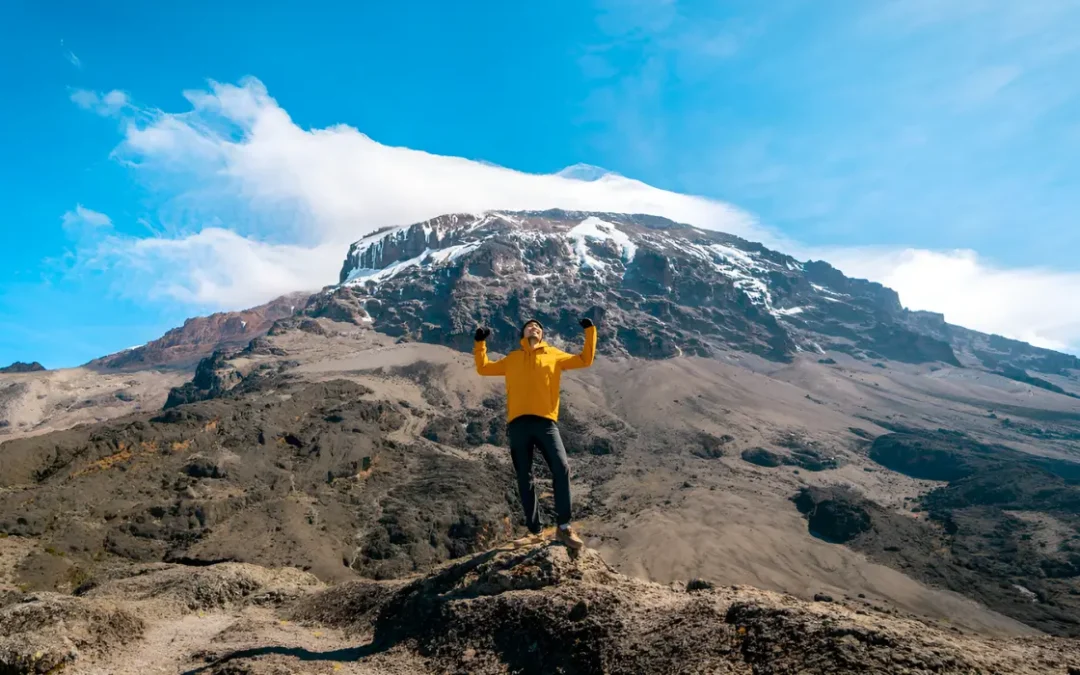
Peak vs. Off‑Peak: Best Months to Secure Your Kilimanjaro Trek
Choosing the right time to trek Mount Kilimanjaro can greatly impact your overall experience. The peak months, primarily from June to October and December to February, offer the best weather conditions. Trekking during these months ensures clear skies, good visibility, and mild temperatures. However, expect more crowds as these months are popular among tourists. Additionally, accommodation prices tend to be higher during the peak season.
The off-peak months, including March to May and November, bring fewer crowds and lower costs. This period coincides with the rainy season, resulting in muddier trails and more challenging conditions. Despite the weather, some trekkers prefer the quiet, serene atmosphere of the off-peak season. You might also get the chance to see the lush landscapes that flourish during this time. According to this post, trekking in less crowded months can provide a unique and peaceful experience.
Alpha Grand Tours offers excellent guidance on the best months for trekking Kilimanjaro. They recommend planning your trek based on your personal preferences. For example, if you’re looking to avoid the busy tourist season and save on costs, the off-peak months may be ideal. On the other hand, if you want to take advantage of the best weather, plan your trek during the peak season. It’s important to weigh the pros and cons of each season before making a decision.
Here’s a quick overview of the benefits and challenges of each season:
- Peak Months: Clear skies, good weather, more crowds, higher costs.
- Off-Peak Months: Fewer crowds, lower costs, rainy weather, muddier trails.
As you can see, each season has its own unique advantages and disadvantages. By carefully considering what matters most to you, you can choose the best time for your Kilimanjaro adventure.
1. Ideal trekking conditions during peak months
Trekking during peak months provides the best overall weather for your Kilimanjaro adventure. From June to October and December to February, conditions are generally dry with clear skies. Mild temperatures during the day make the trek comfortable, while cooler nights can be managed with appropriate gear. This period also offers stunning panoramic views of the mountain and surrounding landscapes. Many trekkers find these ideal conditions worth the extra cost and larger crowds.
Clear skies during these months ensure excellent visibility, perfect for photographers and nature enthusiasts. The dry trails make the ascent less challenging and more enjoyable. There is less risk of rains, which can make trails slippery and dangerous. Although these months are busy, you also get to meet fellow adventurers from around the world. It’s a unique opportunity to share experiences and make new friends.
Wildlife sightings are another bonus of trekking during peak months. Animals are more likely to be seen as they gather around water sources that are more predictable in dry weather. Bird watchers will also revel in the variety of species visible during these months. As the flora is less dense, spotting animals becomes much easier. The experience is unparalleled for nature lovers.
Here’s a summary of what peak months can offer:
- Dry, clear weather
- Excellent visibility
- Comfortable trekking conditions
- Great social atmosphere with other trekkers
- Wonderful wildlife and nature experiences
If you want to experience the best conditions Kilimanjaro has to offer, trekking during peak months is an excellent choice.
2. Cost benefits and serene experiences during off-peak months
Choosing to trek Kilimanjaro during the off-peak months comes with several cost benefits. Accommodation and travel expenses are generally lower, which can make your trip more affordable. This period includes March to May and November, aligning with the rainy season. Lower costs can make a significant difference, especially for budget-conscious adventurers. You can use the savings for better gear or additional activities.
The quieter trails during off-peak months offer a more serene experience. You’ll encounter fewer trekkers, allowing for a more peaceful journey. This solitude can provide a deeper connection with nature and a chance to enjoy the mountain’s beauty without distractions. Many trekkers appreciate the calm and tranquility found in these months. It’s a great opportunity for those seeking a more introspective adventure.
Despite the rainy conditions, the landscapes during off-peak months can be breathtaking. The rainfall brings lush greenery and blooming flowers, creating picturesque scenery. Trekking through these vibrant landscapes is a unique experience that not all trekkers get to see. While the weather may present challenges, the stunning views often make it worthwhile. According to here is the article, experiencing Kilimanjaro in its greenest months can be truly rewarding.
Here are some key points about off-peak trekking:
- Lower costs for accommodation and travel
- Quieter, more serene trails
- Beautiful, lush landscapes
- Fewer distractions from other trekkers
- Unique opportunities for introspection and peaceful treks
For those looking for a cost-effective and tranquil trek, the off-peak months provide an ideal setting to enjoy Kilimanjaro’s natural beauty.
Recommendations from Alpha Grand Tours for Optimal Trekking Months
Alpha Grand Tours advises planning your Kilimanjaro trek between June and October or December and February. These months offer the best weather conditions, ensuring a safer and more enjoyable trek. Clear skies and mild temperatures provide excellent visibility and comfortable hiking experiences. However, be prepared for higher costs due to increased demand. Booking in advance is recommended to secure spots.
For those seeking a quieter, more cost-effective trek, consider the off-peak months of March to May and November. Alpha Grand Tours highlights that these months bring fewer crowds and lower prices. The trails may be muddier due to the rains, but the serene atmosphere can be a unique experience. Rain gear and proper footwear are essential for these months. Off-peak treks can offer a deeper connection with nature.
Here’s a brief comparison to help you decide:
| Peak Months | Off-Peak Months |
|---|---|
| Clear skies, mild temperatures | Lower costs, fewer crowds |
| Higher costs, more trekkers | Rainy, muddy trails |
| Excellent visibility | Serene atmosphere |
Alpha Grand Tours provides expert guidance for your trek. They suggest considering your preferences and budget when choosing trekking dates. If you’re looking to meet new people and enjoy the best weather, peak months are ideal. However, for a quieter and more affordable adventure, the off-peak months are worth exploring. Both options have their unique advantages, making Kilimanjaro a versatile trekking destination.
Alpha Grand Tours also recommends being flexible with dates. Weather can be unpredictable, so a slight shift in your schedule could enhance your experience. They emphasize the importance of being well-prepared with suitable gear and physical conditioning. Whether you choose peak or off-peak months, a well-planned trek can offer an unforgettable adventure on Mount Kilimanjaro.

Frequently Asked Questions
Planning a trek to Kilimanjaro can be exciting but complex. Here are some common questions to help you prepare for your adventure. Our answers provide useful information to ensure you have a smooth and enjoyable trek.
1. What gear is essential for a Kilimanjaro trek?
Essential gear for a Kilimanjaro trek includes a sturdy backpack, waterproof clothing, and quality hiking boots. You will also need a warm sleeping bag, sunglasses, and sunblock. Don’t forget to bring a refillable water bottle to stay hydrated throughout the hike.
Additionally, layering your clothing is crucial to manage changing weather conditions. A headlamp and extra batteries are vital for nighttime movements. Trekking poles can provide much-needed support, especially on steep inclines. Proper preparation with the right gear can make your trek safer and more comfortable.
2. How physically fit do I need to be to climb Kilimanjaro?
Climbing Kilimanjaro requires a good level of physical fitness. It’s important to be able to walk long distances, as the trek can take several days. Cardiovascular endurance is key since you’ll be hiking at high altitudes. Strength training for your legs can also be very beneficial.
Beginners should start preparing months in advance with regular hikes and workouts. Training hikes are particularly useful to simulate trekking conditions. Consulting your doctor before embarking on such an adventure is recommended to ensure you are fit. With proper training, you can enhance your chances of successfully reaching the summit.
3. What are the main routes for trekking Kilimanjaro?
There are several main routes for trekking Kilimanjaro, each offering unique challenges and views. Popular routes include the Marangu, Machame, and Lemosho routes. Marangu is known as the “Coca-Cola” route for its relative ease and availability of huts for accommodation.
Machame, often termed the “Whiskey” route, is more challenging but scenic. Lemosho is great for acclimatization with a longer duration. Each route varies in terms of difficulty, scenery, and trekking experience. Choosing the right route depends on your preferences and fitness level.
4. How can I acclimate better to the altitude on Kilimanjaro?
Acclimation to altitude is crucial for a successful Kilimanjaro trek. Gradual ascent is vital to allow your body to adjust to lower oxygen levels. Spending extra days on the mountain can improve acclimation significantly. Drinking plenty of water helps maintain your health and hydration.
Listening to your body and resting when necessary can prevent altitude sickness. Some trekkers use medications like Diamox to aid acclimatization. It’s important to know the symptoms of altitude sickness and seek help if needed. Proper strategies can ensure a safer and more successful trek.
5. What wildlife can I expect to see on Kilimanjaro?
Kilimanjaro hosts diverse wildlife, mainly in its lower regions. You might see animals like colobus monkeys, bushbucks, and elephants. Birdwatchers will appreciate the variety of birds, including hornbills and sunbirds. As you ascend, wildlife sightings become rarer.
The unique vegetation and ecosystems offer sightings of interesting flora and smaller wildlife. The rainforest zone is particularly rich in biodiversity. Respect for wildlife is important to preserve their natural habitats. Trekking can provide unforgettable encounters with nature.


